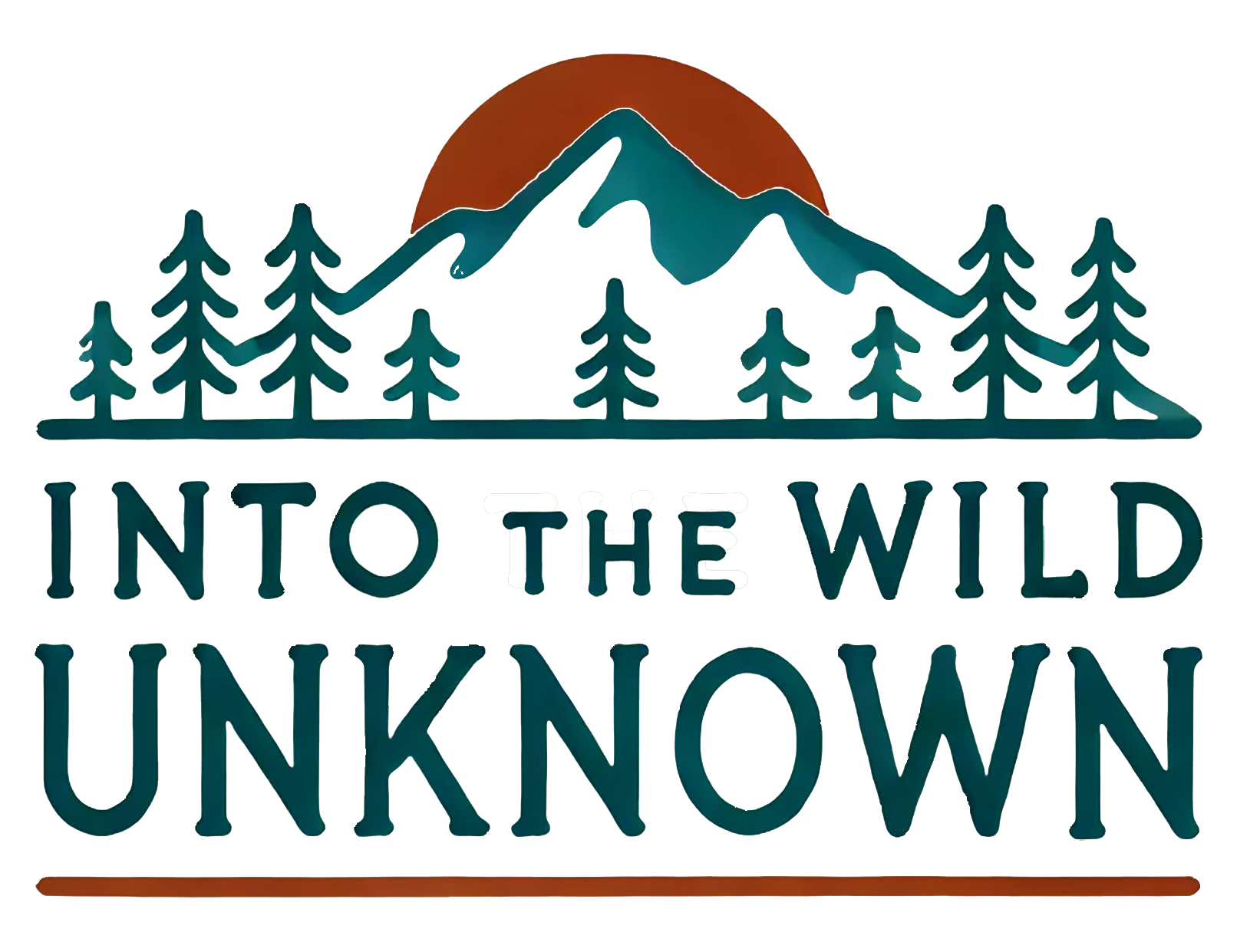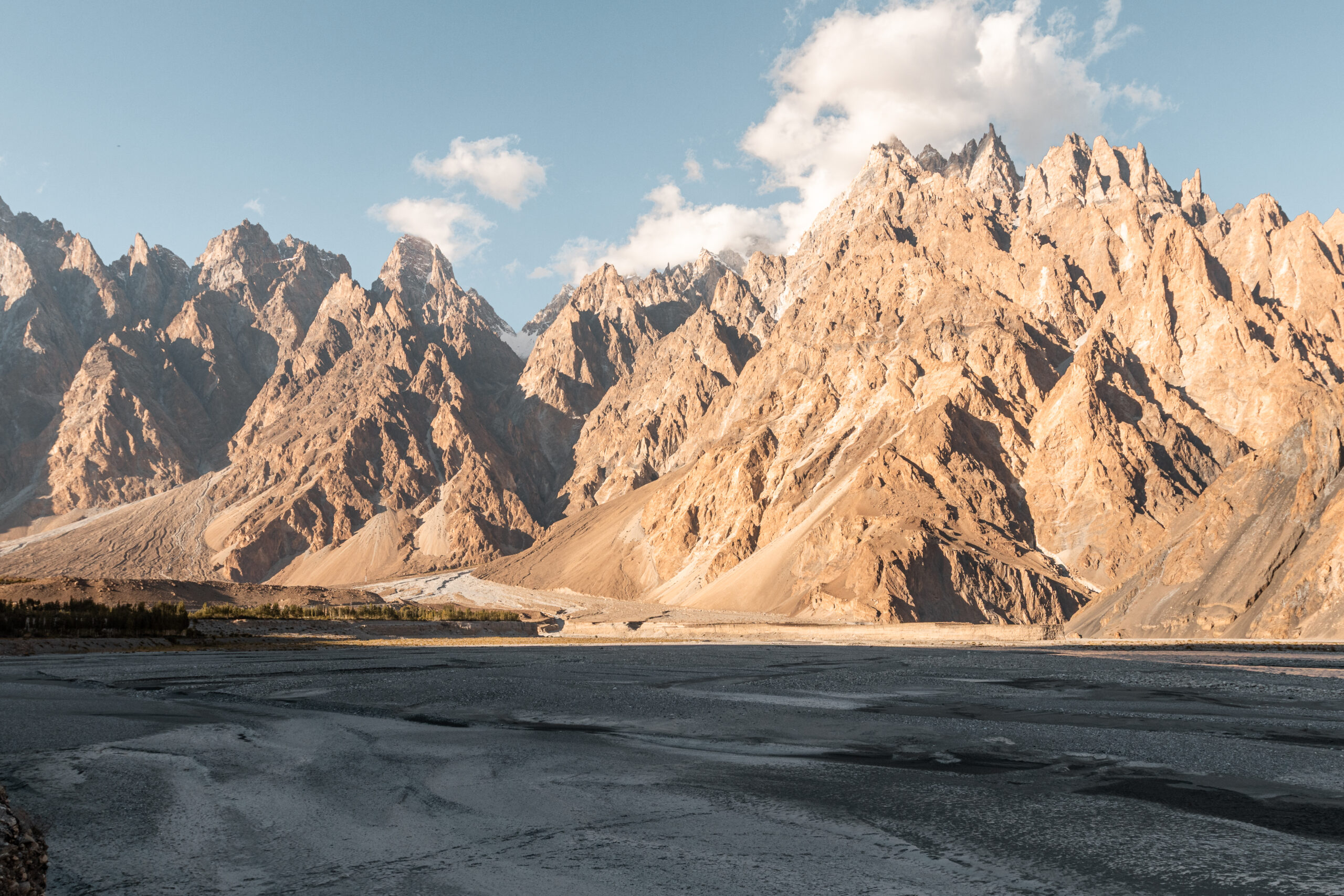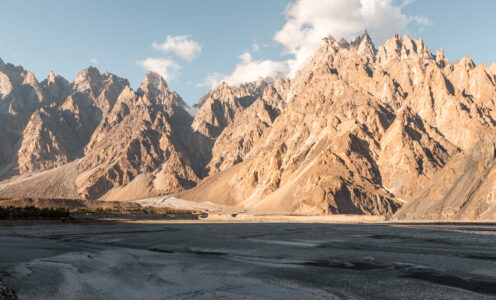Nestled among some of the world’s highest mountain ranges, Northern Pakistan offers an unparalleled adventure for travellers seeking raw landscapes, vibrant cultures, and heartfelt hospitality. For those looking to solo backpack Northern Pakistan, you’ll discover soaring peaks of the Karakoram, serene valleys, and ancient villages far from the usual tourist trails. This remote region promises breathtaking views and experiences that are as challenging as they are rewarding.
Backpacking Northern Pakistan independently is an incredibly fulfilling experience, one that requires some planning and a lot of improvising, but opens doors to authentic encounters and unforgettable memories. Whether you’re a seasoned trekker, a culture lover, or simply curious about exploring off-the-beaten-path destinations, this guide covers everything you need to know to travel here on a budget, safely and respectfully.
In this post, I’ll share practical tips on when to visit, how to get around, where to stay, and how to prepare for the realities of life in the mountains. You’ll also find advice for solo travellers and budget backpackers, plus links to detailed guides on trekking, the Karakoram Highway, and hidden gems throughout the region. Let’s dive into the wild beauty of Northern Pakistan.
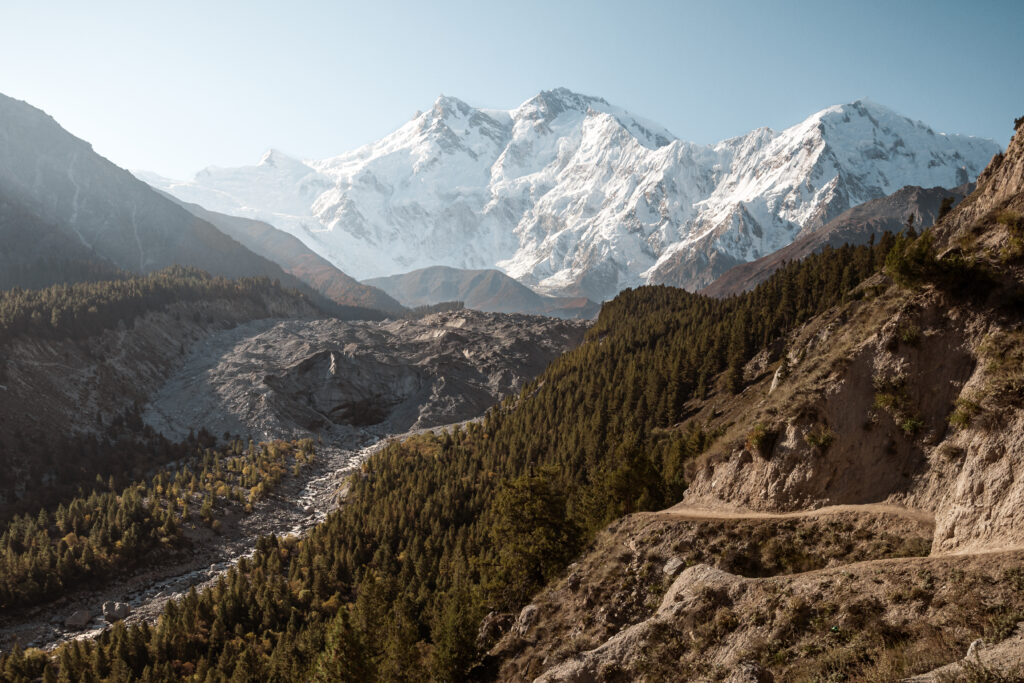 Trekking with views of Nanga Parbat (8126 meters)
Trekking with views of Nanga Parbat (8126 meters)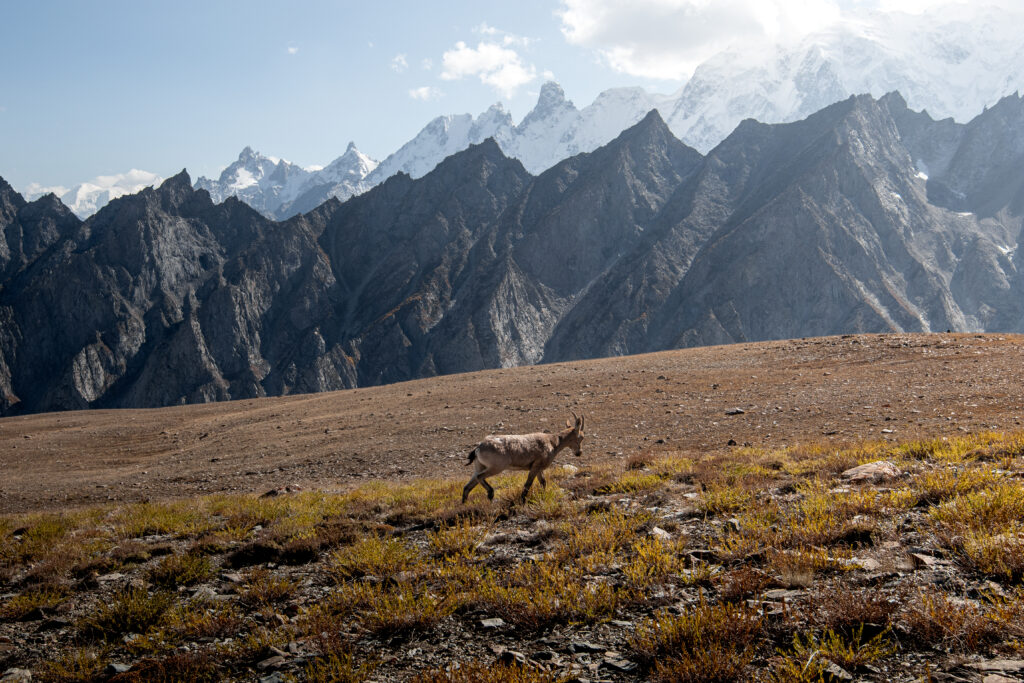 Patundas Meadows Trek
Patundas Meadows Trek
Where is “Northern Pakistan”?
Northern Pakistan refers to the mountainous regions in the northernmost part of the country, mainly encompassing Gilgit-Baltistan and parts of Khyber Pakhtunkhwa. This vast area is home to some of the highest peaks in the world, including K2, Nanga Parbat, and the towering ranges of the Karakoram, Hindu Kush, and Himalayas. Some of the main highlights in Northern Pakistan include:
Visa Information
Visa requirements for Pakistan can change frequently, so it’s always best to check the latest details on their official website before planning your trip.
When I applied for my e-Visa in early-August 2024, it cost $35, and a letter of invitation (LOI) was still required. However, just a few weeks later, the rules were updated, and the e-Visa became free, with no LOI required for many Western countries. Since these regulations can change again, it’s important to double-check the requirements before applying for your e-Visa. Approval typically takes less than a week.
Safety While Solo Backpacking Northern Pakistan
Now the most popular question: Is it safe to travel Pakistan?
That’s a complicated answer and not exactly a yes or no. Check here for a deeper analysis from a solo female traveller who spent 2 months in Northern Pakistan.
When to Go: Best Time to Visit Northern Pakistan
Northern Pakistan is a region of dramatic mountains and changing seasons, so the best time to visit depends on what kind of experience you’re after. Generally, the travel season runs from April to October, when roads are open and the weather is pleasant.
Pro Tip: If you’re a budget backpacker, the best months are April-May and September-October. You’ll avoid the summer crowds and domestic tourism, still get good weather, and pay less for accommodation and transport.
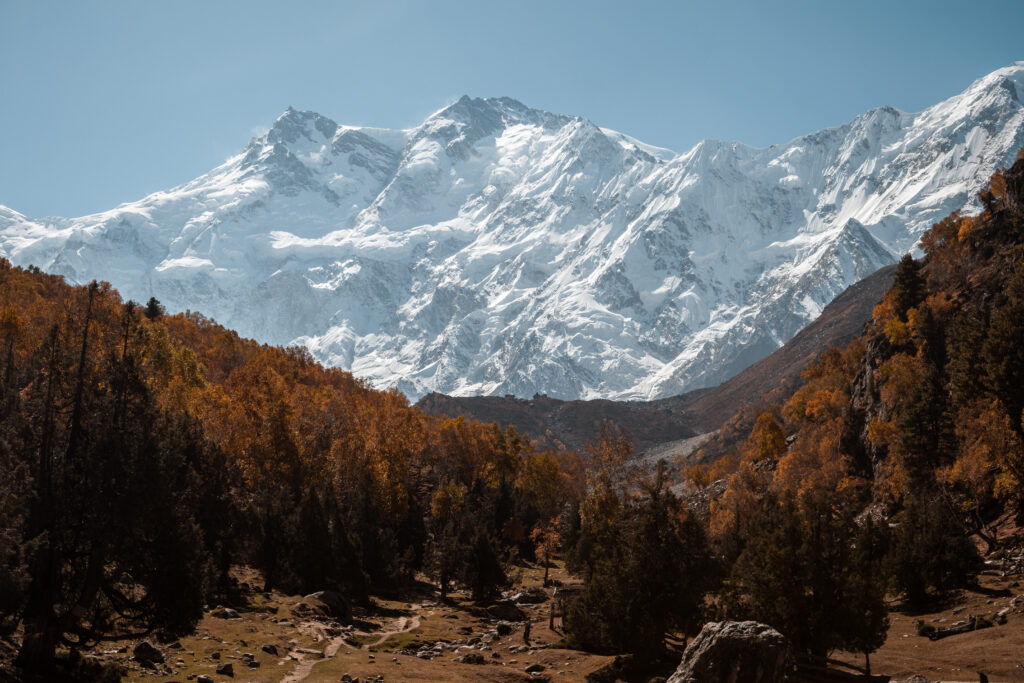
Connectivity and SIM Cards
Wi-Fi access along the Karakoram Highway is generally limited and mostly found in hotels, guesthouses, and some cafes in larger towns like Islamabad, Gilgit, and Karimabad. In smaller villages and remote areas, internet connectivity is often weak or non-existent, so don’t rely on Wi-Fi for staying connected. And keep in mind that even in places with Wi-Fi speeds can be slow and unreliable.
Therefore, it’s best to get a local SIM card with a data plan. In the Gilgit-Baltistan region, you can purchase a local SIM card in Gilgit. For this region, I’d recommend SCOM (office in Gilgit) for the best coverage along the KKH but the signal strength can vary in more remote valleys. Data packages are pretty affordable and convenient. I paid a total of 1100 PKR (around 3.5€) for the SIM card and data plan of 20GB for 1 month.
Budget Breakdown
Daily Costs
I travelled Northern Pakistan independently for nearly 2 months and spent an average of 23€ per day. My trip wasn’t on an extreme budget. I occasionally chose slightly nicer accommodations (if you’re travelling with someone, your accommodation costs will be nearly half), treated myself to nicer meals, and I also did some guided treks and small tours. Disclaimer: You can travel even cheaper by staying in more budget accommodations or camping, solely hitchhiking, and eating exclusively at local eateries.
How to Get Cash
Cash is essential when travelling in Northern Pakistan and ATMs that take foreign cards don’t exist outside the major towns of Islamabad, Gilgit, Aliabad, Chitral and Skardu. It’s best to withdraw a large amount of Pakistani Rupees in these major cities before heading to more remote areas. Also sometimes the ATMs even in larger towns can run out of cash or be temporarily offline, so don’t rely solely on them. I tried a few different banks but the the only ones that would work to withdraw money with foreign cards were Bank Alfalah and Standard Chartered (I think this one only exists in Islamabad).
Getting Around: Transport in Northern Pakistan
Public Transport
Pakistan has a fairly extensive public transport network, but in the Gilgit-Baltistan region, options are mostly limited to local mini-vans, shared taxis, and jeeps for more remote areas.
Trains – Pakistan has an extensive railway network, but it does not extend into Northern Pakistan.
Buses – The same goes for buses: you can find large buses throughout most of the country, but in the north, they are mostly limited to routes from Islamabad to Skardu, Gilgit, or Karimabad. Beyond these main routes, transportation is typically limited to smaller vans or shared jeeps.
Local Mini-Vans – These are the most common local public transport options, often packed to the brim like a clown car. They have no fixed schedule and only depart once completely full. While they are an affordable way to get around, expect a hot and cramped ride, constantly shifting between uncomfortable sitting positions the entire journey.
Shared-Taxis – Usually small cars or SUVs which operate on fixed routes and only depart when full. While they are faster than mini-vans, they can also be cramped, with extra passengers squeezed into every available space. As a woman alone you’ll likely have to take the front seat which costs more.
Essential Tips to Navigate Northern Pakistan
Self-Driving & Hitchhiking
Northern Pakistan is one of the easiest places in the world to hitchhike. People are incredibly friendly, and it’s generally safe, especially in rural areas where hospitality is a core part of the culture. While some drivers may expect a small contribution for fuel, many will happily give you a ride for free, eager to help and share stories.
While most backpackers rely on public transport or hitchhiking, it’s also possible to rent a motorcycle to explore Northern Pakistan. This is especially popular in places like Hunza, Gilgit, and Skardu, where there are small rental shops catering to travellers. Riding a motorbike gives you the freedom to stop in tiny villages, reach viewpoints at your own pace, and access side valleys that are otherwise tricky without private transport. That said, mountain roads can be rough, traffic unpredictable, and petrol stations limited in remote areas, so it’s best suited for those with prior riding experience.
Accommodation
You’ll find a wide range of accommodation in Northern Pakistan, from simple family-run guesthouses to fancier hotels in bigger towns. For budget backpackers, the best options are usually basic guesthouses and homestays, which are affordable, welcoming, and often include home-cooked meals.
Be prepared: Even in bigger towns, power outages are frequent and hot water isn’t always reliable, especially in budget places. Carrying a power bank or solar charger is a good idea to keep your electronics running.
Tip: Bargaining is normal, especially if you’re staying several nights. Prices are often lower outside the summer rush, making spring and autumn great times for budget travellers.
Where to Go: Itineraries
2-Weeks Itinerary
For a first trip, two weeks is just enough time to follow the legendary Karakoram Highway and explore the valleys along the way. Flying into Islamabad and starting the journey north to Gilgit, most travellers then head into Hunza Valley, with stops in Karimabad, Passu, and Gulmit. Then continuing north to the dramatic Khunjerab Pass on the Chinese border. Detours to Fairy Meadows, Nagar Valley, or even Skardu add more variety if you have the time. This route balances stunning scenery, cultural highlights, and a few short hikes without being too rushed. You can find all you need to know on How to Travel the Iconic Karakoram Highway post.
1-Month+ Itinerary
If you have a month or more, you can combine the classic Karakoram Highway highlights with off-the-beaten-path destinations and longer treks. Start in Lahore to experience Pakistan’s vibrant city life and historical sites before heading north. From Islamabad, travel up the KKH to Gilgit, then explore Hunza Valley and the less-visited Nagar Valley, taking in the Passu Cones, Gulmit, and Khunjerab Pass.
For adventure off the beaten path, continue to Misgar and Chapursan Valley, a remote region with stunning mountain scenery and almost no tourists. Another highlight is the Kalash Valley, reached via the scenic Phander Valley and over Shandur Pass, where you can experience the unique culture of the Kalash people.
For trekking enthusiasts, add multi-day hikes like Nanga Parbat Basecamp and Rakaposhi Basecamp for breathtaking mountain vistas or Patundas Meadows, a high-altitude trek with glaciers and alpine meadows. You can mix in shorter side trips to Fairy Meadows or Skardu for more iconic landscapes.
This extended itinerary allows you to see both the well-known highlights and the hidden gems of Northern Pakistan, while combining cultural experiences, road trips, and trekking adventures.
Final Thoughts
Northern Pakistan is a destination that rewards curiosity, patience, and a sense of adventure. From the vibrant culture of Lahore to the remote valleys of Hunza, Chapursan, and the Kalash region, every journey offers a mix of breathtaking landscapes, warm hospitality, and unexpected experiences. Travel here independently, and you’ll discover a side of Pakistan that few see: towering peaks, rushing rivers, quiet villages, and endless skies.
Budget travellers can go far with a bit of planning: public transport, guesthouses, and local food keep costs low, while trekking and motorbike rides reveal hidden corners. At the same time, it’s a place that challenges you with bumpy mountain roads, countless power outages, and basic facilities are part of the experience, so patience and flexibility are essential.
Whether you’re trekking high-altitude meadows, crossing mountain passes, or simply sipping chai in a village home, Northern Pakistan leaves a lasting impression. For those willing to explore off the beaten path, it’s a region full of discovery, beauty, and stories waiting to be told.
For more detailed guides and stories from my travels in Pakistan, check out these posts:
